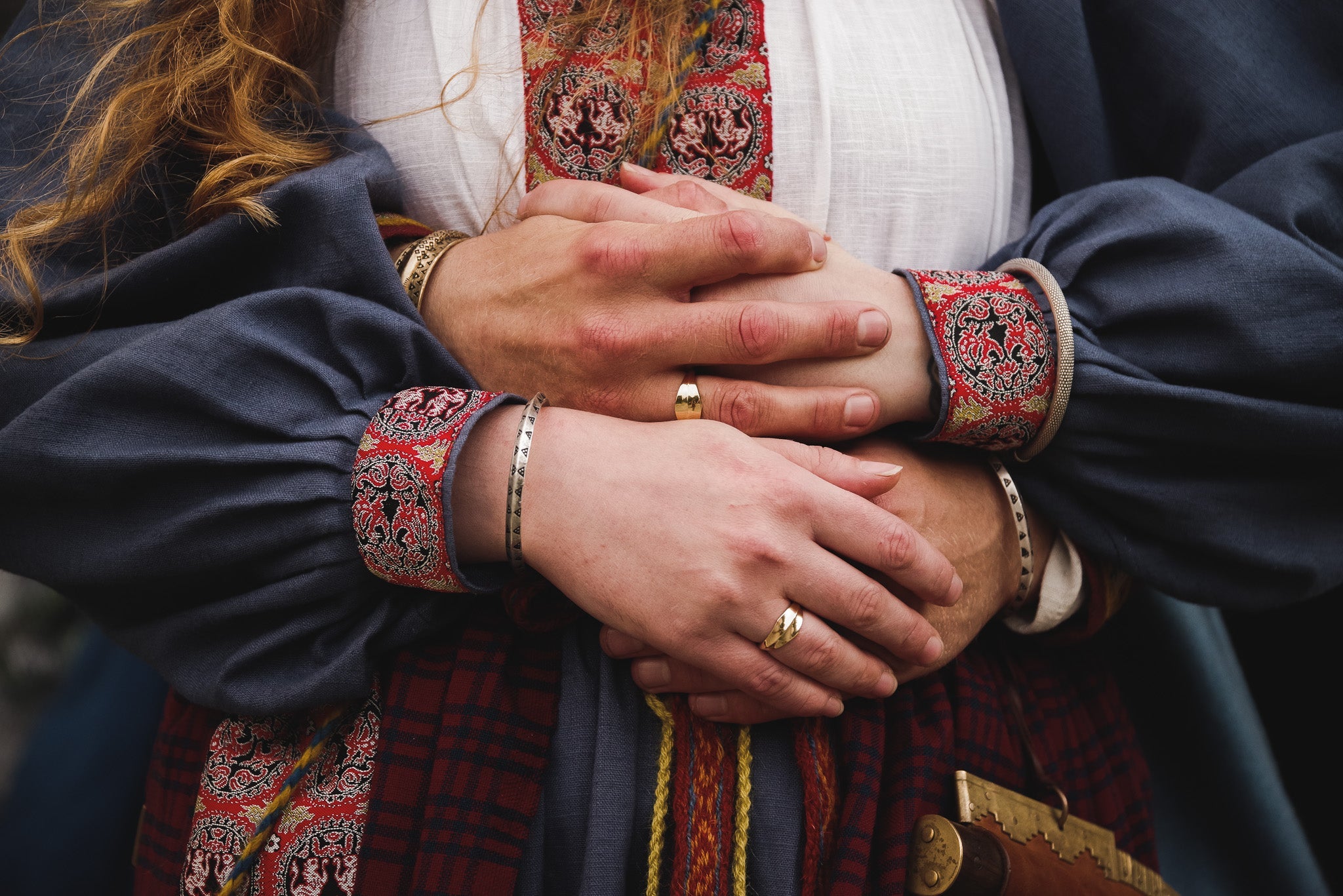
Following Archeological Findings
Creating historically accurate garments inspired by Viking Age and medieval finds is a journey that blends archaeology, art, and hands-on craftsmanship. In this blog post, we’ll explore how following archaeological findings helps us breathe life into the past, from studying ancient texts and excavation reports to experimenting with historical methods to bring these ancient outfits back into the light.
Uncovering the Past: Sources of Inspiration
The foundation of recreating garments lies in rigorous study of archaeological sources, including books, excavation reports, and interpretations of finds and fragments. For Viking Age and medieval reconstructions, understanding context is critical. Sites like Haithabu (Hedeby), Birka, and York (Jorvik) have produced preserved textile fragments that offer a rare glimpse into the garments people wore. Each fragment, from tunics to caps, tells us something unique—whether it’s a weave pattern, stitching method, or material.
Books and publications, authored by historians and archaeologists, are invaluable resources. They consolidate findings and present interpretations based on meticulous studies of excavation reports, helping us understand garment construction and cultural influences on clothing. Additionally, peer-reviewed archaeological reports document the materials, designs, and even the smallest traces of stitches on surviving fragments. These sources provide precise details that guide our interpretation of fabric types, garment shapes, and even embellishments.
Fragments and Finds: A Puzzle of Fabric and Function
Reconstructing clothing from the Viking Age is akin to solving a puzzle, where each fabric fragment holds essential clues. In many cases, we’re working with partial finds—scraps of wool, linen, or silk. For example, fragments from Haithabu hint at both everyday and ceremonial attire, revealing the diverse range of clothing people might have worn. Some fragments might have preserved traces of color or decorative trims, helping us imagine how garments looked when newly crafted.
One such fragment-based garment is the woolen apron dress, often pieced together using interpretations from multiple sites and preserved iconography. This process requires careful analysis of fragment placement, stitch length, and fabric wear, leading to educated interpretations of how a whole piece might have been constructed and worn. Understanding fragments and piecing together a plausible design based on evidence is essential to recreating a garment that feels historically genuine.
The Role of Iconography in Clothing Reconstruction
Beyond physical remains, Viking Age iconography offers valuable insights. Carvings, tapestries, and metalwork from the period often depict individuals in distinct attire, providing a secondary source of reference. Though somewhat interpretive, these images illustrate the layered and draped styles common in Viking Age clothing. Combining these visuals with archaeological finds offers a fuller picture of garment aesthetics and cultural dress codes.
Interpreting iconography can sometimes challenge us to balance artistic representation with practicality. Details in jewelry placement, for example, help us understand accessory use and layering, but the style and cut of garments might require further extrapolation from physical fragments. Nonetheless, these depictions guide our vision of how people presented themselves and add dimension to our textile work.
Experimenting with History: Recreating Garments through Experimental Archaeology
Experimental archaeology is a crucial part of historical garment reconstruction. By using historically accurate methods and materials, such as natural wool or plant-dyed silk, we can explore how these garments were created and worn in their time. Hand-stitching, a hallmark of historical accuracy, brings its own set of challenges, requiring patience and dedication to the fine art of traditional needlework.
Working with period-appropriate tools and stitches, we aim to produce garments that replicate not only the look but also the feel and durability of their ancient counterparts. For example, creating the LEIF Woolen Thorsberg Pants involves handsewing from start to finish, using methods known from Iron Age techniques. Every stitch aligns with historical accuracy, mimicking the feel, durability, and fit that people would have experienced centuries ago.
The Heart of Reenactment: Bringing History to Life
This dedication to accurate reproduction ultimately culminates in living history. When people don these garments, they step back in time, experiencing the weight, warmth, and movement of attire as it was meant to be worn. This approach is as much about learning as it is about sharing. We can understand what it might have felt like to don a Haithabu tunic or a Birka dress and connect with the past on a visceral level.
By merging thorough research, detailed iconography analysis, and traditional craftsmanship, we don’t just recreate clothing; we rekindle the traditions, techniques, and aesthetics of a time long past. Each piece reflects our respect for the past, honoring the skills and creativity of the people who came before us. In each stitch, we seek to keep their stories alive, creating clothing that is not just seen but experienced as close to history as we can come.





Hinterlasse einen Kommentar
Diese Website ist durch hCaptcha geschützt und es gelten die allgemeinen Geschäftsbedingungen und Datenschutzbestimmungen von hCaptcha.